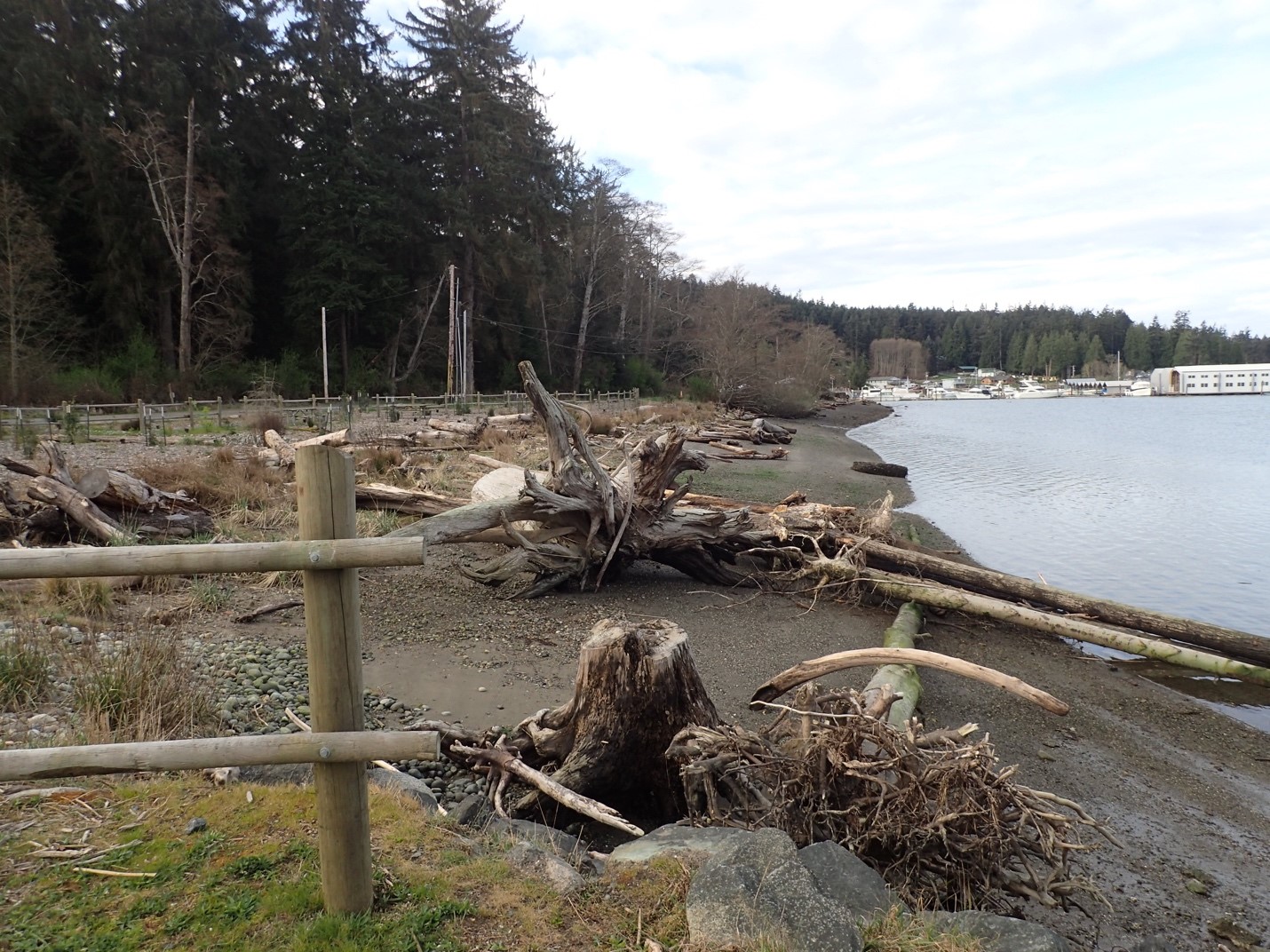Restoring Nearshore Habitat While Improving Public Access
Thousands of visitors come to Cornet Bay every year to launch boats, picnic, fish and crab. Six lanes of boat launches provide the main saltwater access from Deception Pass State Park, with as many as 800 boats launching on a summer weekend. Young salmon also use the nearshore of Cornet Bay as a main highway from their home rivers out to the ocean. To restore the beach for wildlife, project partners removed creosote-treated timber and contaminated fill which can harm salmon, added sand and gravel to the beach to create a gentle slope, and planted native vegetation to attract insects for salmon and other wildlife. Logs were placed on the shore to stabilize the beach and trap marine plant material that attracts invertebrates that salmon, birds, and other wildlife like to eat. Chinook salmon have been found in the nearshore waters, and forage fish spawned on the beach in 2018 for the first time.
What worked:
- Removal of 65 tons of creosote-treated timber and more than 79 tons of contaminated fill, addition of 1,700 tons of mixed gravel, and planting 43,000 square feet of native vegetation restored the natural habitat.
- Adding logs prevented erosion and attracted insects for salmon and wildlife.
- Forage fish returned to lay their eggs on the beach in 2018 for the first time.
- More insects were found on the restored beach than the unrestored beach.
- Restoring habitat increased natural beach and backshore by 2.2 acres.
- Working with volunteers reduced the cost of planting.
- Removing bulkheads and grading the beach improved public access to the water.
Benefits:
- Native plants attract insects that salmon eat.
- Shallow areas near the beach provide habitat for young salmon to rest and grow.
- Native plants provide nutrients for the beach, habitat for insects, and improve the food web along the shore for forage fish and young salmon.
- Posted signs teach visitors how young salmon and forage fish use the nearshore.
- During summer, more than 1,000 visitors per day see the interpretive signs.
- Safe beach access was improved for visitors.
Location:
- Congressional District: 2
- Legislative District: 10
- WRIA: 6
- County: Island
Partners:
- Washington State Parks
- Northwest Straits Foundation
- Island County Marine Resources Committee
- Skagit Fisheries Enhancement Group
- WSU Beach Watchers
- Sound Water Stewards
- Whidbey Island Conservation District
Project Funding:
- Puget Sound Partnership’s Puget Sound Acquisition and Restoration Fund
- The Salmon Recovery Funding Board
- US Fish & Wildlife Service
- Washington Department of Natural Resources
- Northwest Straits Foundation
- Island County Marine Resources Committee/Northwest Straits Commission
- US Environmental Protection Agency

